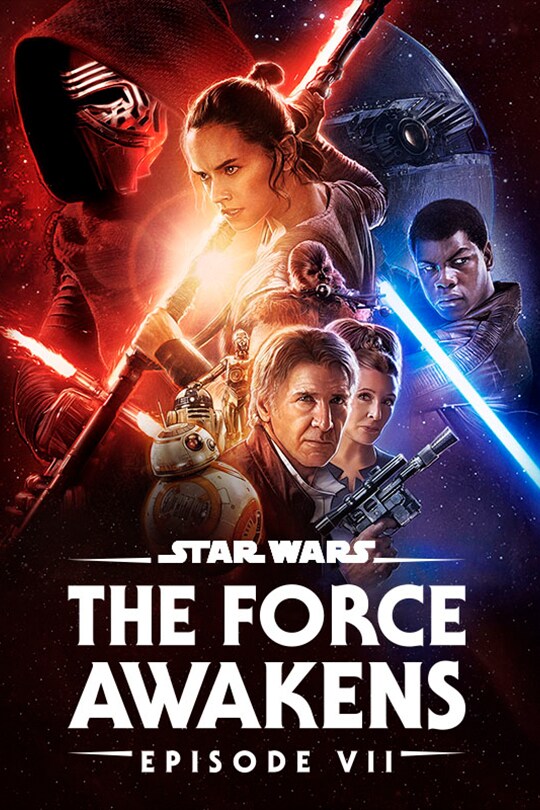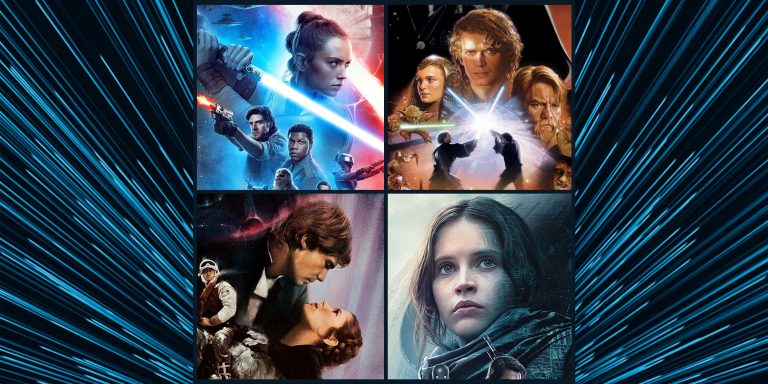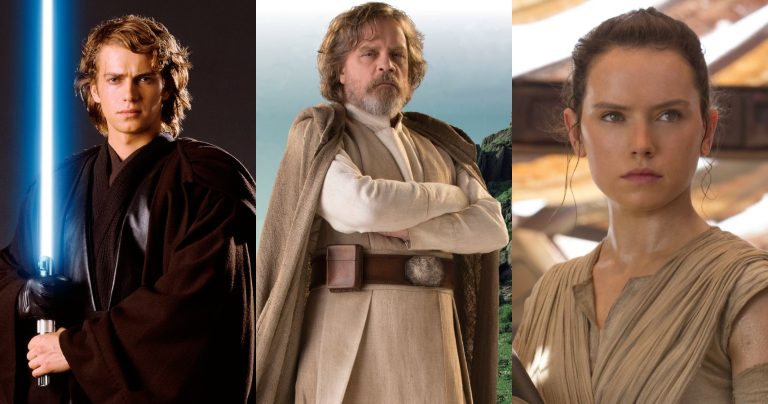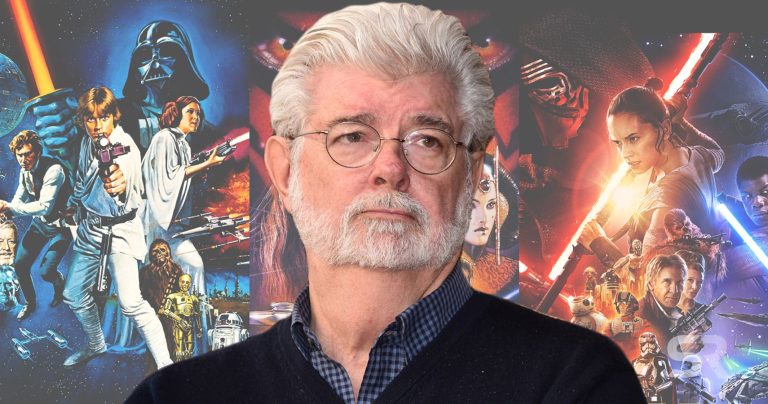What Is The Chronological Order Of The Star Wars Movies?
Ah, the Star Wars movies! A beloved franchise that has captured the hearts of millions around the world. But with so many films, spin-offs, and TV series, it can be a bit confusing to keep track of the chronological order. Fear not, my fellow Jedi enthusiasts, for I am here to guide you through the galaxy of Star Wars in a way that even the most casual fan can understand. So, grab your lightsaber and let’s embark on this epic journey together!
Now, you may be wondering, “What is the chronological order of the Star Wars movies?” Well, my friend, it’s not as straightforward as you might think. The Star Wars saga is divided into three trilogies, and things can get a little jumbled up when it comes to the order in which the movies were released versus the actual chronological timeline of events. But fear not, for I am here to shed some light on this matter. So, buckle up and get ready for a ride through time and space as we unravel the secrets of the Star Wars universe. May the Force be with us!
1. Episode I: The Phantom Menace
2. Episode II: Attack of the Clones
3. Episode III: Revenge of the Sith
4. Episode IV: A New Hope
5. Episode V: The Empire Strikes Back
6. Episode VI: Return of the Jedi
7. Episode VII: The Force Awakens
8. Episode VIII: The Last Jedi
9. Episode IX: The Rise of Skywalker
This order presents the story in a linear timeline, allowing viewers to follow the events in the galaxy far, far away. May the Force be with you!
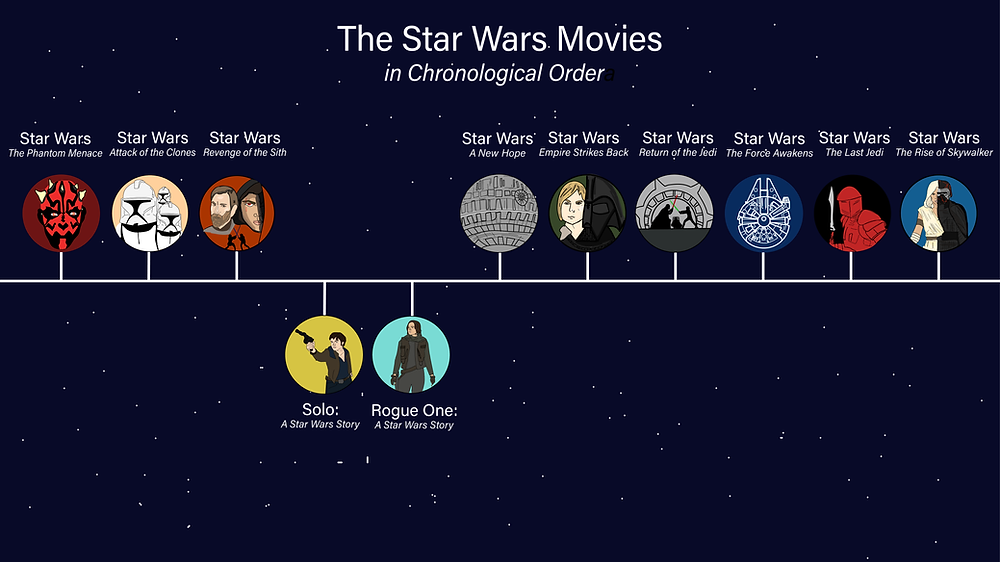
Understanding the Chronological Order of the Star Wars Movies
Star Wars is a beloved franchise that has captured the hearts of millions of fans around the world. With its epic storytelling, memorable characters, and iconic battles, the Star Wars universe has become a cultural phenomenon. However, one question that often arises is: what is the chronological order of the Star Wars movies? In this article, we will delve into the timeline of the Star Wars saga and explore the different ways in which the movies can be viewed.
Original Release Order: A New Hope to Return of the Jedi
The original release order of the Star Wars movies follows the journey of Luke Skywalker, the last hope of the Jedi Order, as he battles against the dark forces of the Galactic Empire. It all begins with “Star Wars: Episode IV – A New Hope,” which introduces us to Luke, Princess Leia, Han Solo, and the wise Jedi Knight, Obi-Wan Kenobi. The movie sets the stage for the epic battle between the Rebel Alliance and the Empire, culminating in a thrilling climax.
The story continues with “Star Wars: Episode V – The Empire Strikes Back,” where Luke faces the ultimate test of his Jedi abilities and confronts the truth about his lineage. This installment is often regarded as one of the best in the series, with its iconic twist and breathtaking action sequences. Finally, the original trilogy concludes with “Star Wars: Episode VI – Return of the Jedi,” as the Rebel Alliance launches a daring mission to destroy the Empire’s new Death Star and bring peace to the galaxy.
The Prequel Trilogy: Exploring the Origins
In 1999, George Lucas decided to expand the Star Wars universe by delving into the origins of the characters and events that shaped the original trilogy. The prequel trilogy consists of three movies: “Star Wars: Episode I – The Phantom Menace,” “Star Wars: Episode II – Attack of the Clones,” and “Star Wars: Episode III – Revenge of the Sith.” These films take place before the events of the original trilogy and explore the rise of Darth Vader and the fall of the Jedi Order.
“The Phantom Menace” introduces us to a young Anakin Skywalker, who will later become Darth Vader, as well as the mysterious Sith Lord, Darth Maul. The movie also delves into the political turmoil that sets the stage for the rise of the Empire. “Attack of the Clones” focuses on the blossoming romance between Anakin and Padmé Amidala, as well as the beginning of the Clone Wars. Finally, “Revenge of the Sith” chronicles Anakin’s transformation into Darth Vader and the destruction of the Jedi Order.
Release Order vs. Chronological Order: Which Should You Choose?
Now that we have explored the two main ways in which the Star Wars movies can be viewed, the question remains: which order should you choose? Both release order and chronological order offer unique perspectives on the story, and the decision ultimately comes down to personal preference.
The release order allows viewers to experience the Star Wars saga in the same way that audiences did when the movies were first released. This order preserves the surprises and plot twists that made the original trilogy so iconic, while also providing a deeper understanding of the events through the prequel trilogy.
On the other hand, chronological order offers a more cohesive and linear narrative. By starting with the prequels, viewers can witness the events that led to the original trilogy and gain a deeper appreciation for the characters and their motivations. Chronological order also allows for a more seamless transition between the movies, as the story unfolds in a natural progression.
Ultimately, the choice between release order and chronological order is up to you. Whichever order you choose, the Star Wars saga is sure to captivate and entertain you with its timeless story of good versus evil, hope versus despair, and the power of the Force.
Conclusion
In conclusion, the chronological order of the Star Wars movies can be viewed in two main ways: the original release order and the chronological order. The original release order follows the journey of Luke Skywalker in the original trilogy, while the prequel trilogy explores the origins of the characters and events that shaped the galaxy. Whether you choose to watch the movies in release order or chronological order, the Star Wars saga is a captivating and thrilling adventure that will transport you to a galaxy far, far away. May the Force be with you!
Key Takeaways: What is the Chronological Order of the Star Wars Movies?
- The Star Wars movies can be watched in chronological order according to the events in the storyline.
- The correct chronological order of the Star Wars movies is: Episode I – The Phantom Menace, Episode II – Attack of the Clones, Episode III – Revenge of the Sith, Solo: A Star Wars Story, Rogue One: A Star Wars Story, Episode IV – A New Hope, Episode V – The Empire Strikes Back, Episode VI – Return of the Jedi, Episode VII – The Force Awakens, Episode VIII – The Last Jedi, and Episode IX – The Rise of Skywalker.
- Watching the movies in chronological order allows you to follow the story from the beginning to the end.
- However, some fans prefer to watch the movies in release order, starting with Episode IV, as it was originally intended.
- Whether you choose to watch the Star Wars movies in chronological or release order, each movie offers a unique and exciting experience in the epic Star Wars universe.
Frequently Asked Questions
Question 1: What is the chronological order of the Star Wars movies?
The Star Wars movies can be watched in chronological order according to the events that take place in the storyline. Here is the chronological order:
1. Episode I: The Phantom Menace
2. Episode II: Attack of the Clones
3. Episode III: Revenge of the Sith
4. Episode IV: A New Hope
5. Episode V: The Empire Strikes Back
6. Episode VI: Return of the Jedi
7. Episode VII: The Force Awakens
8. Episode VIII: The Last Jedi
9. Episode IX: The Rise of Skywalker
This order follows the chronological progression of the Star Wars story, starting with the prequel trilogy, followed by the original trilogy, and concluding with the sequel trilogy.
Question 2: What is the significance of watching the Star Wars movies in chronological order?
Watching the Star Wars movies in chronological order allows viewers to experience the story as it unfolds in the intended sequence. It provides a deeper understanding of the characters, their motivations, and the overall narrative arcs. By starting with the prequel trilogy, viewers get to witness the rise and fall of Anakin Skywalker, the transformation of Darth Vader, and the events that led to the original trilogy. This chronological approach enhances the overall viewing experience and provides a more cohesive and immersive storytelling experience.
Additionally, watching the movies in chronological order allows for a better appreciation of the continuity and interconnectedness of the Star Wars universe. It enables viewers to pick up on subtle references, foreshadowing, and character development that may have been missed when watching the movies in release order. Overall, watching the Star Wars movies in chronological order offers a comprehensive and rewarding viewing experience for both new and longtime fans.
Question 3: Is it necessary to watch the Star Wars movies in chronological order?
No, it is not necessary to watch the Star Wars movies in chronological order. The movies were originally released in a different order, with Episodes IV, V, and VI being released before Episodes I, II, and III. This release order is often referred to as the “Machete Order.” Many fans argue that watching the movies in release order provides a more authentic and nostalgic viewing experience, as it mirrors the way the films were originally intended to be seen.
However, watching the Star Wars movies in chronological order can offer a fresh perspective and a different way of experiencing the story. It allows viewers to follow the events in a linear fashion and uncover the deeper layers of the narrative. Ultimately, the choice of watching the movies in chronological order or release order depends on personal preference and the desired viewing experience.
Question 4: Are there any alternative viewing orders for the Star Wars movies?
Yes, besides the chronological order and the release order, there are a few alternative viewing orders that some fans have suggested. One popular alternative is the “Machete Order,” which involves watching the original trilogy (Episodes IV, V, and VI) first, followed by Episode II (Attack of the Clones) and Episode III (Revenge of the Sith), and then concluding with Episode VII (The Force Awakens) and Episode VIII (The Last Jedi). This order aims to preserve the surprise reveal in Episode V and provide additional context to Anakin Skywalker’s backstory.
Another alternative order is the “Ernst Rister Order,” which suggests watching the movies in the order of Episode IV, V, I, II, III, and VI, omitting Episode I (The Phantom Menace) entirely. This order aims to streamline the story and focus on the core narrative of Luke Skywalker’s journey.
Ultimately, these alternative viewing orders offer different perspectives and interpretations of the Star Wars saga, allowing fans to explore the story in unique ways.
Question 5: Should I watch the standalone Star Wars films as well?
While not essential to understand the main Star Wars saga, the standalone Star Wars films, such as Rogue One: A Star Wars Story and Solo: A Star Wars Story, offer additional depth and context to the overall universe. These standalone films explore different aspects of the Star Wars universe and provide a fresh perspective on familiar characters and events.
Watching the standalone films can enhance the overall viewing experience and provide a more comprehensive understanding of the Star Wars universe. They offer unique stories and expand upon the lore established in the main saga. However, if you prefer to focus solely on the main saga, you can still enjoy a complete and fulfilling Star Wars experience without watching the standalone films.
Final Summary: The Chronological Order of the Star Wars Movies
So there you have it, the epic saga of Star Wars told in its proper chronological order! From the rise of Anakin Skywalker to the fall of the Empire, this franchise has captured the hearts and minds of fans around the world. Whether you’re a Jedi master or a scruffy-looking nerf herder, experiencing the Star Wars movies in the correct sequence adds a whole new dimension to the story.
Starting with “Episode I: The Phantom Menace,” we witness the origins of Anakin Skywalker and the events that set the stage for the entire saga. Then, we follow Anakin’s journey as he becomes the legendary Darth Vader in the prequel trilogy, with “Episode II: Attack of the Clones” and “Episode III: Revenge of the Sith.” These films provide crucial context and reveal the tragic fall of Anakin to the dark side.
Next, we travel to the original trilogy, beginning with “Episode IV: A New Hope,” where we meet Luke Skywalker, Princess Leia, and Han Solo as they battle against the tyrannical rule of the Empire. The story continues with “Episode V: The Empire Strikes Back,” which is widely regarded as one of the best entries in the series, and concludes with “Episode VI: Return of the Jedi,” where the Rebellion faces its ultimate showdown with the Sith.
Finally, we come to the sequel trilogy, starting with “Episode VII: The Force Awakens,” which introduces a new generation of characters and brings back beloved favorites. This is followed by “Episode VIII: The Last Jedi,” where the conflict between the Resistance and the First Order reaches its peak. And finally, “Episode IX: The Rise of Skywalker” brings the Skywalker saga to a thrilling and emotional conclusion.
In conclusion, the chronological order of the Star Wars movies takes us on an unforgettable journey through space and time, filled with heroes, villains, lightsabers, and the Force. Whether you’re a die-hard fan or a newcomer to the galaxy far, far away, watching the films in this order provides a cohesive and immersive experience. May the Force be with you as you embark on this adventure!

